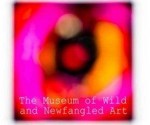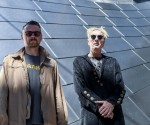We talk with directors Wim Wenders and Juliano Salgado of The Salt of The Earth
 Director Wim Wenders is well known for groundbreaking films like Faraway, So Close!, Wings of Desire, and Buena Vista Social Club and he recently teamed up with a co-director Juliano Salgado to create the Oscar-nominated documentary The Salt of The Earth about Brazilian photographer Sebastião Salgado. I recently had the opportunity to talk with them about the process and what they learned.
Director Wim Wenders is well known for groundbreaking films like Faraway, So Close!, Wings of Desire, and Buena Vista Social Club and he recently teamed up with a co-director Juliano Salgado to create the Oscar-nominated documentary The Salt of The Earth about Brazilian photographer Sebastião Salgado. I recently had the opportunity to talk with them about the process and what they learned.
As an artist, you’re watching another artist’s process, what did you learn from watching Sebastião work?
Wim Wenders (W): I learned one thing more than anything else, he invested time. When he was photographing he forgot about time and he forgot about his own life and he gave always all the time, and that was necessary for a project and sometimes it took years. I realized in my own world and also as a documentary filmmaker, we don’t have that. I’m part of those that come in and out. For this film, I had to dedicate three years to this man in order to be on his level, in order to have a right to make this movie. There are other things he does differently than other photographers, it’s not just the timing it’s also the uncanny ability to connect via his photographs.
Juliano Salgado (S): I really think Sebastião’s great talent, it’s that he actually manages to connect with people and intuitively he knows where to put the camera so you actually feel that emotion. The thing that is happening between him and the person or the landscape, sometimes you feel that and it breaks the distance you know. It’s amazing when you see his pictures, and that’s my feeling, you know you don’t really feel distance with people that have so different lives. His great talent is that he can put those emotions in the picture.
What did Sebastião think of the film?
S: Sebastião saw it for the first time a few months ago in Rio. When we were about to finish the edit we sent them a little file, you know? A low-res file so they could see it.
W: And they didn’t see it all during the entire process. They saw it when it was finished.
S: When they saw it for the first time in Rio, we were in the Rio Film Festival, it was so emotional. They were holding it together until the moment Sebastião’s dad comes in for the first time and starts speaking about what he thought Sebastião should have done, “a lawyer, an economist…” Then suddenly Sebastião breaks down, starts crying, it was so emotional. Lélia too. It was really beautiful; actually, it was a great moment.
W: He called me afterwards from Rio and it was unforgettable because until then I really didn’t know how they were thinking about it. We made this film for three and a half years and I really didn’t have any feedback, and I was always a little worried, didn’t know if we had done something right. Then he called me from Rio and he was still very emotional and that’s when I realized, “Ok, they can both live with it.”
How different is the process of thinking about documentary photography verses film?
W: I don’t think I would have dared to getting involved in a film about a photographer if I hadn’t known already that this man, that I had already encountered for a couple of months, became friends with, if I hadn’t known he was a great storyteller. If I hadn’t known that, I don’t think I would have dared to enter the territory of a movie because photos in a film need protection. Without protection, they become a slideshow. My own photographs, for instance, I always refuse to have them on the screen because I think they lose something, and that’s why I like them as prints or a book but on the screen it’s difficult. I only got involved in this venture with Juliano realizing Sebastião himself was the answer and the wealth of his stories and his economic, political, sociological, psychological knowledge of all the places he went to, that was going to make it possible to make a film.
S: That’s what we shared; actually, when we started it was an idea that we were not going to make a film about a photographer but one of the great witnesses of the last 40 years, someone who had lived so much. You could see the photos in the exhibitions, in the press, and books but no one knew about all the stories and all the things about Sebastião’s soul. It was really important to share this with a much broader audience than just friends and family, there was something important to pass on, that’s what we believed, that’s how we started.
You would say the story is protecting photography?
W: yeah it’s the knowledge that led him to take these photographs and to share this process of getting involved with all these people and their situation. You see Sebastião has an uncanny ability to become part of the humanity that he’s witnessing and I was of course very curious how that is possible. I saw something in his photographs that I didn’t see in any other photographs. I saw empathy and I saw immersement and I wanted to understand and I finally found out it’s time. This man spends more time with these people and he spends more time to prepare himself and then when he goes there he doesn’t take the next plane out because it’s uncomfortable, he stays and lives with these people under their conditions, he shares, he eats the same food and he stays and he comes back and he sometimes comes back countless times because he feels he made friends, he can depend on them. He has a different application and for me that was a huge discovery.
One of the interesting things about seeing the film is how much it changes and re-contextualizes the photos. You sort of have a better appreciation for the fact that they are still images as opposed to moving images.
S: For me, his still pictures have movement, you watch a still picture, your eyes are drawn to the focal point and then you start watching the details in it and it’s wonderful, rich and complex. Sebastião is always getting so much contextual information, you end up understanding the photos in such a different way from the moment you started watching them, to the moment it switch to the next photo that actually there is a lot of movement but it happens here.
W: It was kind of scary for us to see, we took the pictures always for granted. Some of them we found ourselves from the books. We had them for editing and we thought we knew them so well and went through countless pictures. Sometimes in the editing process, working with the simple files of pictures we brought down, we had to stop editing because there was just too much. At the end we thought we knew these pictures, we were able to live with these pictures, the choices that was in the film were made and we asked Sebastião only then to interfere and to give us high-resolution files of all the pictures that were in the film. On the editing table they looked a little bit better but it didn’t make a big difference. And then the two of us saw the film for the first time on the big screen and I remember it very vividly because it was a shock. the pictures blew me away. How much more I saw and I sometimes felt we left them too short. In the editing room you always fight to keep space around the pictures and not cut them so much and then on the big screen I thought I could watch these pictures for hours and hours more because there is so much on them and that was a huge shock for the first time seeing them on the big screen.
The Salt of The Earth is in select theaters in NY and LA.










